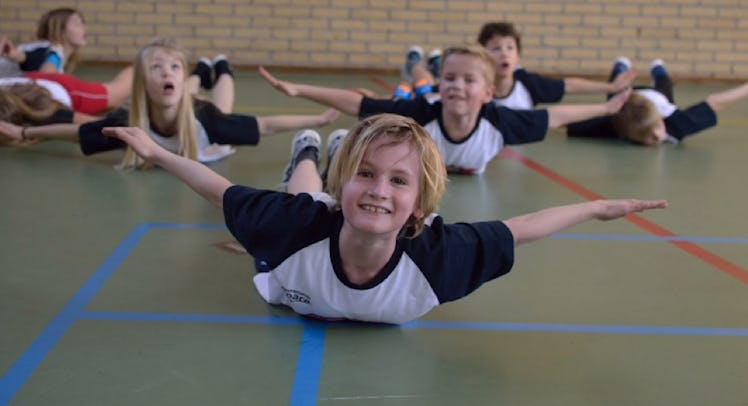NASA Convinces Kids To Do Circuit Training Like Real Astronauts
NASA's Mission X sends physical education course materials to 104,000 students in 38 countries.

It isn’t easy to convince kids to do push-ups or run a mile (perhaps that’s why child obesity is such a problem in the United States). But what if we told children that they’re not just doing push ups—they’re engaging in NASA crew strength training? What if an astronaut popped into gym class to explain that running a mile is a way of training for emergency base station walk-backs?
That’s the core idea behind Mission X: Train Like An Astronaut, a program that NASA has been pushing since 2011 to encourage kids to become passionate about physical fitness. Mission X sends physical education course materials to 104,000 students in 38 countries and also arranges space-themed curricula in public speaking, teamwork and, of course, spaceflight. Astronauts aboard the International Space Station regularly participate via video hookups.
A key part of Mission X is an international challenge to “walk to the moon”. NASA estimates that it would take the average human about 478 million steps to get to the moon, and the program rewards students who complete various fitness-related activities with points or “steps” toward that goal. In 2017, NASA announced that 81,709 students in 35 countries had, collectively, earned 478 million points (or steps). Together, they had succeeded in walking to the moon.
Individual fitness activities come with teacher’s guides that explain why and how astronauts go through related training regimens. For the crew strength training activity, which encourages students to perform a series of push-ups and squats, Mission X notes that astronauts need these skills to explore the lunar or Martian surface. “They must be able to lift, bend, build, maneuver and even exercise during a mission,” according to the teacher’s guide. “If a crew member happens to trip and fall, the strength of their muscles and bones can mean the difference between getting up and returning to work, or having to end the mission and return back to Earth.”
The course encouraging students to jog a mile comes with a similarly exploration-themed impetus. The teacher’s guide explains that, if a Martian rover breaks down during a manned mission to Mars, “crew members must be physically capable of a walk-back to the base station if necessary.”
Are some of the scenarios a bit farfetched, given that we haven’t sent astronauts to the moon since 1972 (and given that astronauts probably don’t just run a mile in PE to prepare to walk-back after a rover disaster)? Perhaps. But anything that can convince kids to get off the couch is definitely worth it. Even if that means playing astronaut during gym class.
This article was originally published on